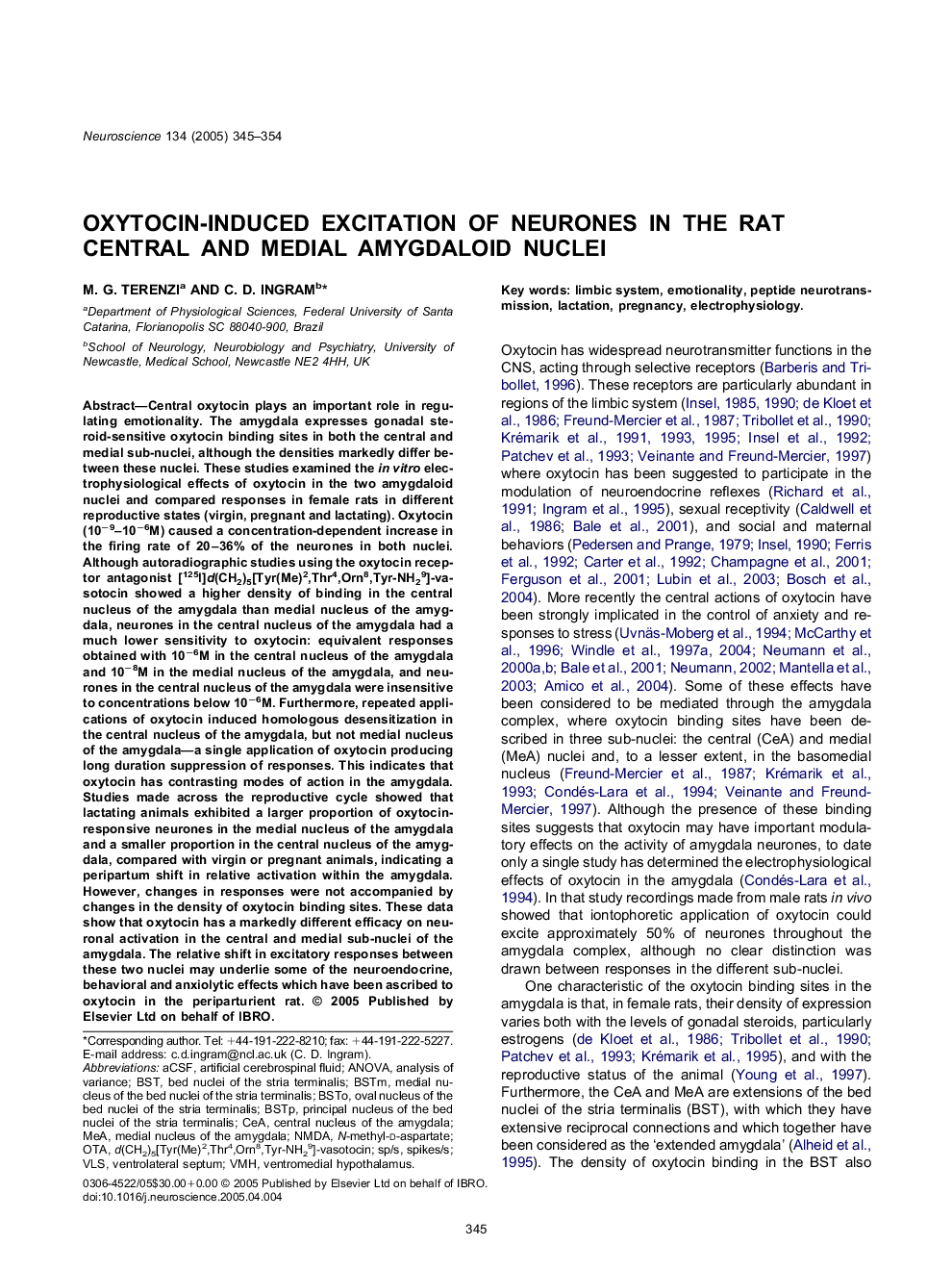| Article ID | Journal | Published Year | Pages | File Type |
|---|---|---|---|---|
| 9425556 | Neuroscience | 2005 | 10 Pages |
Abstract
Central oxytocin plays an important role in regulating emotionality. The amygdala expresses gonadal steroid-sensitive oxytocin binding sites in both the central and medial sub-nuclei, although the densities markedly differ between these nuclei. These studies examined the in vitro electrophysiological effects of oxytocin in the two amygdaloid nuclei and compared responses in female rats in different reproductive states (virgin, pregnant and lactating). Oxytocin (10â9-10â6M) caused a concentration-dependent increase in the firing rate of 20-36% of the neurones in both nuclei. Although autoradiographic studies using the oxytocin receptor antagonist [125I]d(CH2)5[Tyr(Me)2,Thr4,Orn8,Tyr-NH29]-vasotocin showed a higher density of binding in the central nucleus of the amygdala than medial nucleus of the amygdala, neurones in the central nucleus of the amygdala had a much lower sensitivity to oxytocin: equivalent responses obtained with 10â6M in the central nucleus of the amygdala and 10â8M in the medial nucleus of the amygdala, and neurones in the central nucleus of the amygdala were insensitive to concentrations below 10â6M. Furthermore, repeated applications of oxytocin induced homologous desensitization in the central nucleus of the amygdala, but not medial nucleus of the amygdala-a single application of oxytocin producing long duration suppression of responses. This indicates that oxytocin has contrasting modes of action in the amygdala. Studies made across the reproductive cycle showed that lactating animals exhibited a larger proportion of oxytocin-responsive neurones in the medial nucleus of the amygdala and a smaller proportion in the central nucleus of the amygdala, compared with virgin or pregnant animals, indicating a peripartum shift in relative activation within the amygdala. However, changes in responses were not accompanied by changes in the density of oxytocin binding sites. These data show that oxytocin has a markedly different efficacy on neuronal activation in the central and medial sub-nuclei of the amygdala. The relative shift in excitatory responses between these two nuclei may underlie some of the neuroendocrine, behavioral and anxiolytic effects which have been ascribed to oxytocin in the periparturient rat.
Keywords
Related Topics
Life Sciences
Neuroscience
Neuroscience (General)
Authors
M.G. Terenzi, C.D. Ingram,
